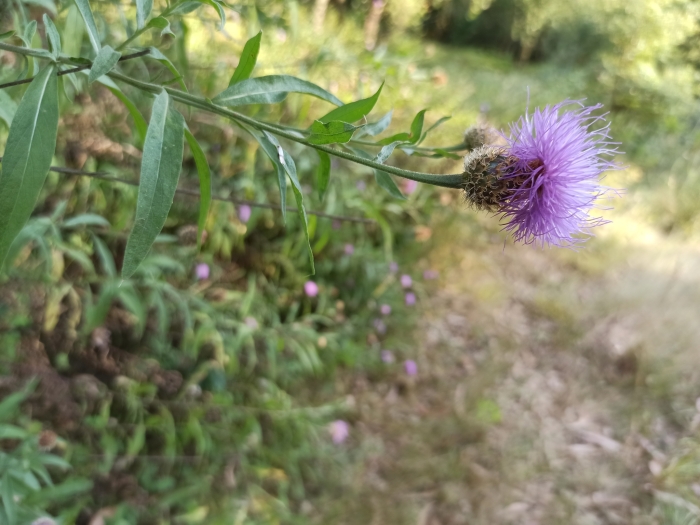Perennial Cornflower
(Cheirolophus sempervirens)
Perennial Cornflower (Cheirolophus sempervirens)
/
/

Daniel Franco
CC BY 4.0
Image By:
Daniel Franco
Recorded By:
Copyright:
CC BY 4.0
Copyright Notice:
Photo by: Daniel Franco | License Type: CC BY 4.0 | License URL: http://creativecommons.org/licenses/by/4.0/ | Rights Holder: Daniel Franco | Publisher: iNaturalist | Date Created: 2021-07-02T22:51Z |

































Estimated Native Range
Summary
Cheirolophus sempervirens, commonly known as Perennial Cornflower, is a perennial herb native to rocky areas and scrublands of Southwest Europe, including the Iberian Peninsula and the Mediterranean region. This plant typically grows to a height of 3-5 feet (0.9-1.5 meters) and a width of 3-4 feet (0.9-1.2 meters), featuring a bushy habit with lance-shaped, green leaves. The flowers are particularly showy, with a vibrant display of purple and pink blooms that appear in the spring and continue through summer and into fall, attracting pollinators such as bees and butterflies.
Perennial Cornflower is valued for its long flowering season and its ability to thrive in poor soils, making it a suitable choice for rock gardens, borders, and wildflower meadows. It is drought-tolerant once established, requiring low to medium amounts of water, and prefers well-drained soils in full sun. While it is not commonly known for any significant diseases or pests, it is important to avoid overwatering to prevent root rot. Due to its potential for invasiveness, it is crucial to consult local guidelines before planting Cheirolophus sempervirens outside its native range to ensure it does not pose a threat to local ecosystems.CC BY-SA 4.0
Perennial Cornflower is valued for its long flowering season and its ability to thrive in poor soils, making it a suitable choice for rock gardens, borders, and wildflower meadows. It is drought-tolerant once established, requiring low to medium amounts of water, and prefers well-drained soils in full sun. While it is not commonly known for any significant diseases or pests, it is important to avoid overwatering to prevent root rot. Due to its potential for invasiveness, it is crucial to consult local guidelines before planting Cheirolophus sempervirens outside its native range to ensure it does not pose a threat to local ecosystems.CC BY-SA 4.0
Plant Description
- Plant Type: Herb
- Height: 3-4.5 feet
- Width: 3-4 feet
- Growth Rate: Rapid
- Flower Color: Purple
- Flowering Season: Spring, Summer, Fall
- Leaf Retention: Deciduous
Growth Requirements
- Sun: Full Sun
- Water: Low, Medium
- Drainage: Medium
Common Uses
Bank Stabilization, Bee Garden, Bird Garden, Border Plant, Butterfly Garden, Deer Resistant, Drought Tolerant, Hummingbird Garden, Low Maintenance, Potted Plant, Rock Garden, Salt Tolerant
Natural Habitat
Rocky areas and scrublands of Southwest Europe
Other Names
Common Names:
Scientific Names: , Cheirolophus sempervirens, Centaurea sempervirens, Centaurea sordida, Centaurea javornikiensis, Centaurea sempervirens f. albiflora, Centaurea sempervirens f. sempervirens, Centaurea sempervirens var. sempervirens, Cheirolophus lanceolatus, Cyanus hastatus
GBIF Accepted Name: Cheirolophus sempervirens (L.) Pomel